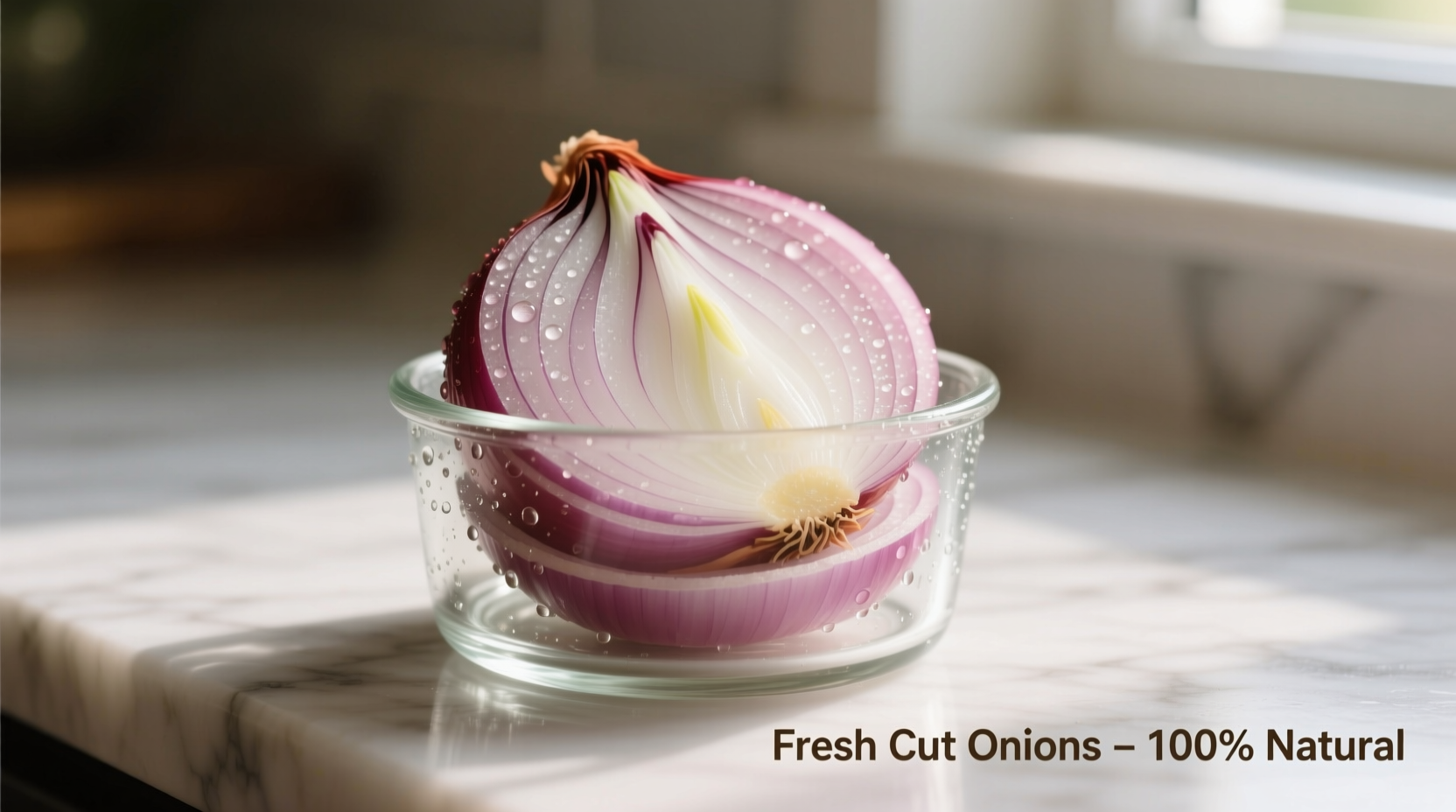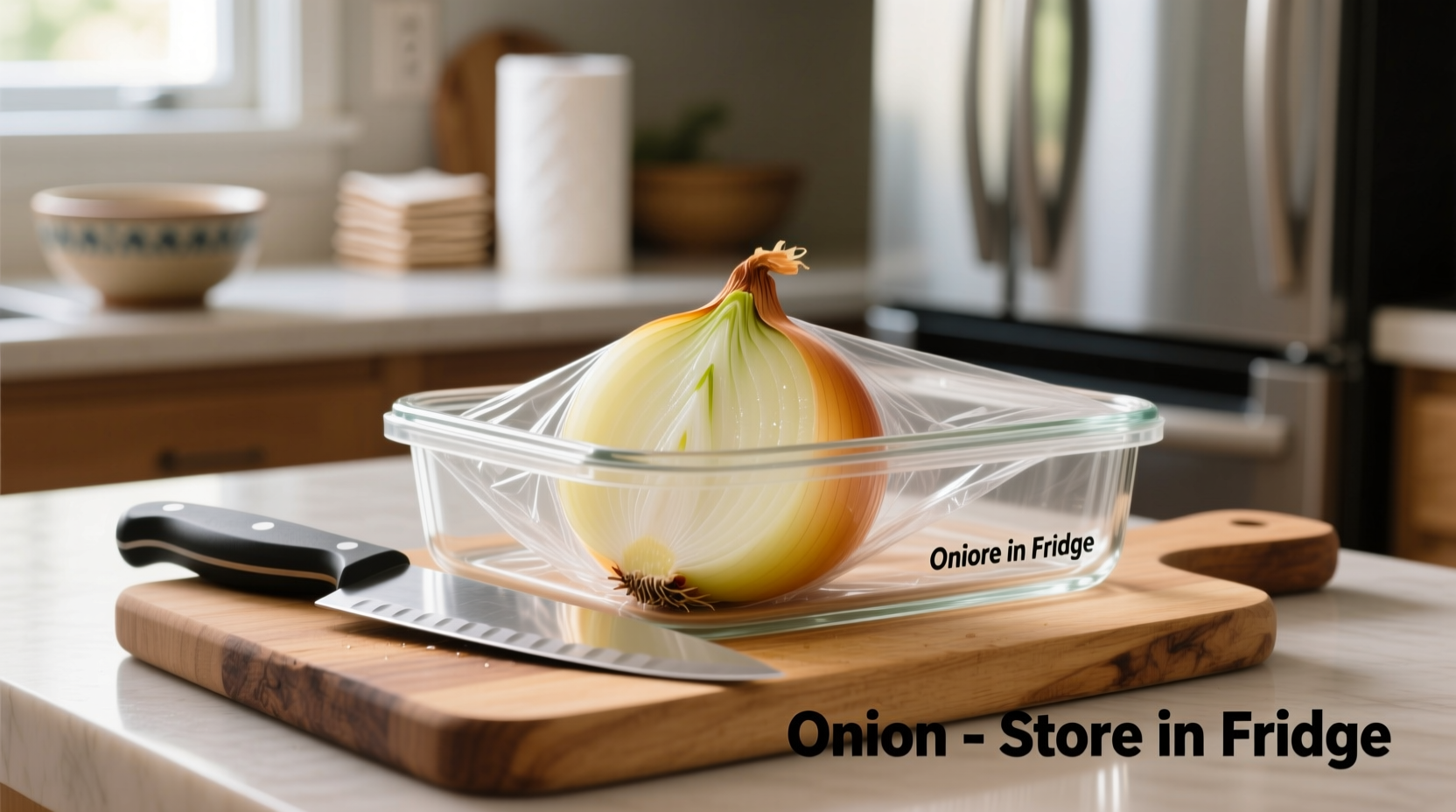Ever cut an onion for a recipe only to wonder how to preserve the rest? You're not alone—nearly 30% of home cooks waste produce because they don't know proper storage techniques. This guide delivers chef-tested methods to extend your cut onion's shelf life while maintaining flavor and safety.
Why Proper Onion Storage Matters
Improperly stored onions become slimy, develop off-flavors, and can harbor bacteria. According to USDA food safety guidelines, cut produce enters the "temperature danger zone" above 40°F (4°C), where bacteria multiply rapidly. Proper storage prevents foodborne illness while reducing kitchen waste.
Immediate Post-Cutting Protocol
What you do in the first 15 minutes determines your onion's longevity:
- Dry thoroughly with paper towels to remove surface moisture that accelerates spoilage
- Discard damaged pieces showing brown spots or softness
- Work quickly—onions begin enzymatic browning within 30 minutes of exposure to air

Short-Term Refrigeration Methods
For onions you'll use within a week, these refrigerator techniques deliver optimal results:
| Storage Method | Shelf Life | Effectiveness Rating |
|---|---|---|
| Airtight glass container | 5-7 days | ★★★★★ |
| Plastic wrap directly on surface | 3-4 days | ★★★☆☆ |
| Water submersion | 2-3 days | ★★☆☆☆ |
The Professional Chef's Container Method
This technique preserves both texture and flavor:
- Place cut onion in a 4-ounce glass container with tight-sealing lid
- Add a folded paper towel to absorb excess moisture
- Store in the refrigerator's crisper drawer (not the main compartment)
- Keep away from ethylene-producing fruits like apples and bananas
Food science research from the University of California confirms that glass containers maintain more stable humidity levels than plastic, reducing cellular breakdown in stored vegetables.
Long-Term Freezing Solutions
When you need to preserve onions beyond a week:
- Flash-freeze method: Spread pieces on parchment paper, freeze for 2 hours, then transfer to freezer bags
- Vacuum sealing: Removes oxygen that causes freezer burn and flavor degradation
- Portion control: Freeze in recipe-sized amounts (1/4 cup works for most dishes)
According to the National Center for Home Food Preservation, properly frozen onions maintain quality for 6-8 months. Thaw overnight in the refrigerator before use for best texture retention.
Critical Storage Mistakes to Avoid
These common errors compromise both safety and quality:
- Leaving cut onions at room temperature longer than 2 hours
- Storing in the original plastic grocery bag (traps moisture)
- Keeping near strong-smelling foods like fish or cheese
- Using containers with residual odors from previous contents
How to Identify Spoiled Onions
Discard onions showing any of these warning signs:
- Slippery or slimy texture
- Unpleasant sour or ammonia-like odor
- Significant darkening beyond normal oxidation
- Mold growth (even in small patches)
Remember that mild browning from oxidation is normal and safe—simply trim affected areas before use. The USDA Food Safety and Inspection Service emphasizes that visual and olfactory checks are your best indicators of produce safety.
Maximizing Flavor in Stored Onions
For optimal taste in cooked dishes:
- Add a splash of vinegar to the storage container to slow enzymatic browning
- Store with a piece of bread to absorb excess moisture
- Use refrigerated onions within 5 days for raw applications like salads
- Freeze onions intended for cooked dishes like soups and stews
Chef Antonio Rodriguez notes: "The key is matching your storage method to how you'll use the onion. Raw applications demand stricter freshness standards than cooked dishes, where flavor compounds transform during heating."











 浙公网安备
33010002000092号
浙公网安备
33010002000092号 浙B2-20120091-4
浙B2-20120091-4